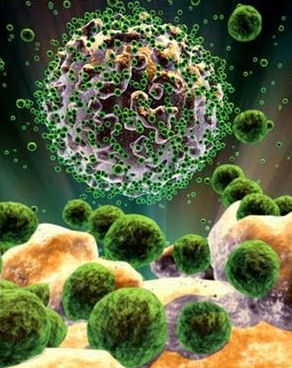 The biological mechanism that keeps the HIV virus hidden and unreachable by current antiviral therapies can be targeted and interrupted by a drug used to treat lymphoma, say researchers at the University of North Carolina at Chapel Hill. Presenting their findings at the 19th Conference on Retroviruses and Opportunistic Infections in Seattle, the researchers claimed they have successfully flushed latent HIV infections with the drug.
The biological mechanism that keeps the HIV virus hidden and unreachable by current antiviral therapies can be targeted and interrupted by a drug used to treat lymphoma, say researchers at the University of North Carolina at Chapel Hill. Presenting their findings at the 19th Conference on Retroviruses and Opportunistic Infections in Seattle, the researchers claimed they have successfully flushed latent HIV infections with the drug.
Current antiretroviral therapies are effective at controlling virus levels, but they can never eliminate the virus from the cells and tissues it has infected, meaning that HIV can never be fully eradicated from the body. "Lifelong use of antiretroviral therapy is problematic for many reasons, not least among them are drug resistance, side effects, and cost," explained researcher David Margolis. "We need to employ better long-term strategies, including a cure."
In Margolis' new study, six HIV-infected men who were medically stable on anti-AIDS drugs received the lymphoma drug vorinosta. Margolis and others had previously shown that vorinostat attacks the enzymes that keep HIV hiding in certain CD4 T cells (specialized immune system cells that the virus uses to replicate). Within hours of receiving the vorinostat, all six patients had a significant increase in HIV RNA in these cells, evidence that the virus was being forced out of its hiding place.
"This proves for the first time that there are ways to specifically treat viral latency, the first step towards curing HIV infection," said Margolis. "It shows that this class of drugs, HDAC inhibitors, can attack persistent virus. Vorinostat may not be the magic bullet, but this success shows us a new way to test drugs to target latency, and suggests that we can build a path that may lead to a cure."
Related:
Discuss this article in our forum
Roll-out HIV treatment as a preventative, say medicos
HIV boffins look to slow-progressors for antibody recipe
HIV drugs causing premature aging
Source: University of North Carolina School of Medicine





